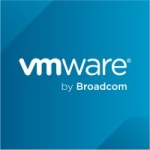
IBM PowerVM Primary Use Case
AS
AhmedSorour
IT Specialist at a tech services company with 1,001-5,000 employees
I use PowerVM for workloads that require hardware-based visualization. It is especially valuable for running Oracle workloads due to its shared processor pool feature, which allows me to limit the number of core usages for Oracle instances, thus reducing licensing costs. I also use PowerVM for SAP HANA databases, allowing larger storage capacities per VM compared to alternative solutions.
View full review »MR
Manish Raj
Solution Sales Specialist at a tech consulting company with 10,001+ employees
I primarily use IBM PowerVM to create and manage servers in a cloud environment. Customers who previously used Power Servers on-premises can now migrate seamlessly to Power Virtual Servers on the cloud. We serve clients transitioning from on-premises to cloud using IBM PowerVM for hosting and application migration.
View full review »
I handle IBM PowerVM, Power SE, and the enterprise edition of AIX, including the cloud private cloud edition of AIX. I am involved with IBM systems, Red Hat Linux, and OpenShift on Power. I take care of platform software, including operating systems, virtualization layers, and security solutions for systems like IBM and Z.
View full review »
Buyer's Guide
IBM PowerVM
December 2025
Learn what your peers think about IBM PowerVM. Get advice and tips from experienced pros sharing their opinions. Updated: December 2025.
879,259 professionals have used our research since 2012.
MB
Maximiliano Bosco
Drirector at a construction company with 201-500 employees
The primary use case is in the banking industry. We utilize PowerVM in products such as IBM Content Manager. The platform is integrated into both development and production environments.
View full review »PowerVM is a specialized hypervisor designed for IBM PowerSystems, which are risk-based systems. In a typical business or CIS systems landscape, you might use VMware or Hyper-V, but for IBM PowerSystems, PowerVM is the only available hypervisor.
In IBM systems, there's a unique use case. Unlike standard Intel-based servers or other platforms where all cores are readily available, in IBM systems, you must procure licenses for both the cores and the core activation.
PowerVM offers the additional functionality of moving these licenses along with the virtual machine (VM). This is where the mobility feature comes in – you can seamlessly move a VM between different PowerVM instances.
View full review »We utilize it mainly for RCM and virtualization. It aids us in our CRM and central operations and supports our CIOs and their operations, ensuring everything runs smoothly. We also support iOS and DevOps through PowerVM, managing all our virtual machines and utilization needs.
View full review »
IBM PowerVM is a stable operating system, and we haven't experienced any performance impact in AIX. It is very reliable. Currently, the main purpose for using it is customer migration to Linux or server consolidation based on their requirements. The market is changing with more customers shifting towards Linux.
View full review »WA
Wycliffe Alwal
Data Center Manager at a financial services firm with 1,001-5,000 employees
We use the solution to run our applications and services.
View full review »We use PowerVM and PowerHA for our ERP system. The primary datacenter has two Power S922 nodes on a PowerHA failover cluster. Each node has two LPARs - one LPAR for Oracle database and another for e-business suite application. The disaster recovery datacenter has one Power S922 node with two LPARs - one for database and another for application.
View full review »I use the product for partitioning. My clients use it on different operating systems like Linux.
View full review »Our primary use case for this solution is for coding systems and applications. IBM PowerVM has a separate market segment for systems and servers. It has Intel systems and Power Systems. Intel-based or RISC and CISC-based systems are generic. The standard system is CISC-based, so it's a Compact Instruction Set of Computers. In contrast, Power Systems, which we usually procure, is RISC-based, a Reduced Instruction Set system.
Power Systems has a separate market segment regarding systems or servers. So you have Intel systems, and you have Power Systems. Intel-based or RISC and CISC-based are very generic. The standard system you get is CISC-based systems, so it's a Compact Instruction Set of Computers, whereas Power Systems that we usually procure are RISC-based, which is a Reduced Instruction Set system.
Primarily, they differ in the way they process data. Secondly, we have a workload requiring higher clock speed, so when we buy a processor, we look at multiple things. First, we look at how much clock speed the processor gives, which means the power for a single thread of the processor to process data. So let's say you have two processors, one with one gigahertz of thread speed and a second with 40 hertz. The 40 hertz is going to work four times faster when it is processing data. So clock speed is what matters. So when we need higher clock speeds, which means we have heavily dependent or heavy threads or multiple applications with heavy threads, we go for systems with higher clock speeds, and in that case, IBM PowerVM has the highest clock speed up till now.
Secondly, when you need higher memory bandwidth, data travel from disc to memory and from memory to processor for processing. So if the road connecting your disc with your memory and your professor is more comprehensive, you can track and send multiple higher traffic. The other important factor is that in use cases where you need higher bandwidth, throughput from memory is where you should use IBM PowerVM.
And third, IBM PowerVM has a higher cache processor. So when the data is processed in a processor, it must first travel to the cache. There are multiple levels, levels 1, 2, 3, and so on. So you will need higher cache memory, which means fewer round trips from memory to processor and cache. It means faster performance. So you procure IBM PowerVM or systems alike. We deploy the solution on-premises.
View full review »We use IBM PowerVM primarily for creating dynamic partitions. We utilize the same physical machine for multiple partitions, dynamically moving resources between them based on performance needs. We have moved from using HISMB to Oracle RAC.
View full review »The clients use it as a backup system for high availability and disaster recovery.
View full review »The product is the most stable technology in the market and is one of the most appropriate solutions for our company's clients as it can be used in a simple manner.
I use the solution in my company or our banking sectors, so it is used for our banking customers and for their core banking systems. Most of the critical systems use IBM PowerVM.
As a consultant, I primarily use IBM PowerVM for solutions related to SAP and Oracle.
We use it to create logical partitions.
View full review »It is hardware-level virtualization. It does not consume anything from the computer resources. It is pretty good and is light. It is not like VMware or Veeam. It doesn't require a lot of resources.
View full review »It is a complete solution. The virtual fibre, virtual network and SRIV are all stable and fit heavy load requirements. Therefore, the solution is suitable for its purpose and targets specific customers, which requires high stability and a high profile.
AS
AhmedSorour
IT Specialist at a tech services company with 1,001-5,000 employees
We primarily use this solution for virtualization to consolidate workloads efficiently.
View full review »Gatron Industries is rolling out one of the largest Digital Transformation program of the Country and require a platform that can provide industry leading Reliability, Availability and Scalability to host the Critical Tier 1 workloads. A no compromise approach was to be taken to ensure that the platform on which our SAP Landscape is hosted performs consistently. It was also required that the Virtualization technology should perform equally well for both OLTP and OLAP workloads. The platform also required to be flexible and must adapt to the changing workloads.
View full review »We're using the solution primarily on power machines and the default specialization software, IVM Power. Our power machines are specifically used to run Oracle databases.
View full review »I primarily use PowerVM for Oracle databases and the Oracle WebLogic server.
View full review »EL
Elvis Lau
Technical Manager at a tech services company with 11-50 employees
Our primary use case is to migrate the server from a standalone server to a VM server.
View full review »We are a system integrator and IBM PowerVM is one of the solutions that we implement for our clients. I am not a solution architect, but I provide assistance with PowerVM.
It is primarily used for business-critical operations like SAP or Oracle databases.
View full review »MG
MohamedGaber
Unix Team Lead at a financial services firm with 10,001+ employees
Our primary use case of PowerVM is for our core banking system. We split our servers into multiple partitions, each one has a specific task for the project.
View full review »PowerVM is used to virtualize IBM Power Servers. It is for IBM Power Servers. It needs specific experience and needs to be professionally managed. Our customers needed proficiency and practical experience with it and it's not easy to find experienced engineers for it.
View full review »We use this solution for virtualization in an on-premises deployment.
View full review »JL
Jinpin Lim
Owner at a tech services company with 11-50 employees
Customer use the software for core and critical systems.
View full review »Our primary use case for IBM PowerVM is helping customers move more than one machine. We use PowerVM to create virtual machines, even if the use case is for an enterprise and resealable. We always recommend PowerVM to our customers; it is better than most solutions.
View full review »Buyer's Guide
IBM PowerVM
December 2025
Learn what your peers think about IBM PowerVM. Get advice and tips from experienced pros sharing their opinions. Updated: December 2025.
879,259 professionals have used our research since 2012.






















